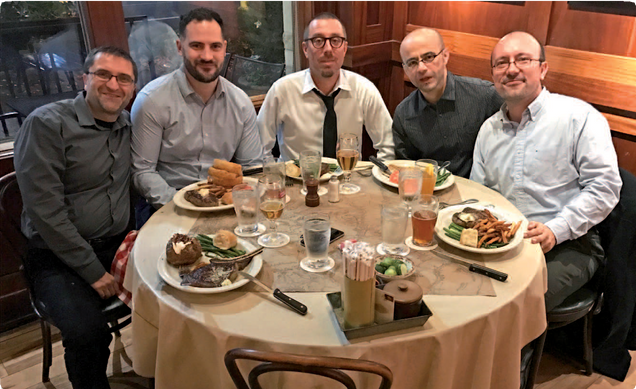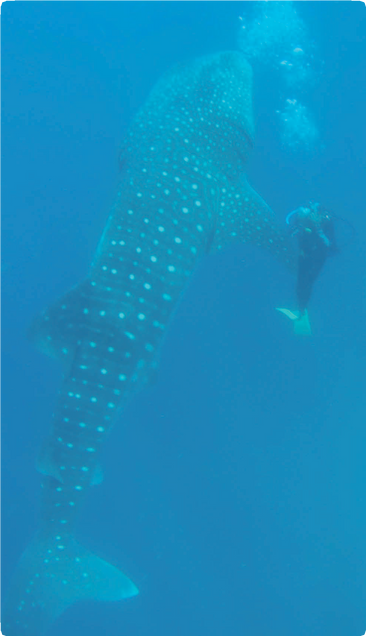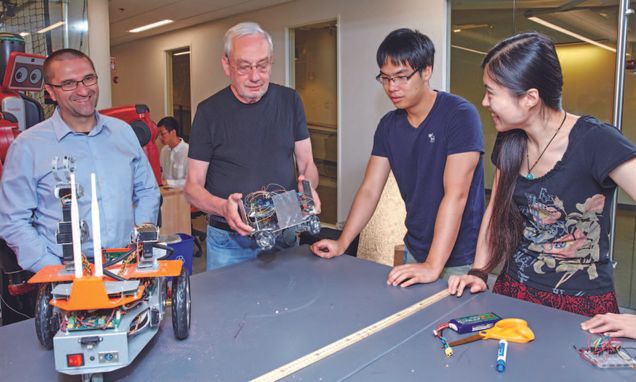IEEE People in Control- Calin A. Belta Profile
Published in: IEEE Control Systems ( Volume: 37, Issue: 4, Aug. 2017 )
Date of Publication: 17 July 2017
Q. What led to your interest in the control field?
Calin: It started with my passion for mathematics. I grew up in communist Romania. The country was more or less closed to the outside world at that time. There was a shortage of food, gas, and electricity. There was no freedom of speech and basically no TV. There was one good thing though in Romania at that time: the rigorous, math- and science-oriented school system. With not much to do, studying math seemed like a good way to spend my time. Also, living in abstract spaces was a good way to escape the not-so-pleasant reality.
I attended a high school that specialized in math and informatics. During labs, I wrote Fortran programs, and I had to punch each line of code on a card, input a deck of cards into a card reader, and then wait for the compilation and execution results. This lengthy programming process led me to appreciate clean and easy-to-parse code, which I think triggered my later appetite for formal methods. When I finished high school and after spending a very interesting half- year in the Romanian army during the 1989 revolution, which overturned the communist regime, I was not sure if I wanted to be a mathematician or an engineer. So I decided to try both. I passed the entrance exam at the Gh. Asachi Technical University of Iasi, Bulgaria, majoring in automatic control, and at the Al. I Cuza University of Iasi, studying mathematics. For one year, I attended classes and examinations at both universities. The first semesters in both schools were very similar similar—a lot of math. How- ever, in the second semester, in the Automatic Control program, I took control theory, and I was introduced to Matlab and Simulink during the lab sessions. I was fascinated to see math at work for the very first time. So I decided to continue with control. I graduated as valedictorian from the Automatic Control program and was offered an assistant professor position upon graduation.

I started doing research as an undergraduate student, when I was interested in optimal control. Then I worked on bifurcations, and eventually I converged to geometric control and robotics during my studies in the Ph.D. program at the University of Pennsylvania under the supervision of Vijay Kumar. At that time, I was fascinated by differential geometry and its connection with kinematics and control. My Ph.D. dissertation was mainly on optimality and invariance on manifolds, with applications to robot motion planning. During my Ph.D. work, I had the great opportunity to interact with George J. Pap- pas, Rajeev Alur, and Paulo Tabuada. My interactions with them, especially with George, had a great influence on my career. I became interested in fundamental connections between control theory and computer science. I started learning about hybrid systems and formal methods.
When I graduated and started my own research program as an assistant professor, I was completely converted. While I was still interested in robotics, my focus was on formal verification and provably correct control of dynamical systems. Later in my career, I became more interested in experiments. I now lead a large robotics lab, and, together with my students, I spend a lot of time understanding and formalizing physical limitations of real robotic applications.
Q. What are some of your research interests?
Calin: My research is centered on formal methods. Even though I am not a computer scientist and I stepped into this area relatively late in my career, I am very excited about the opportunities at the confluence between formal methods, control theory, optimization, and machine learning.
Since 2003, my group has focused on developing formal methods (verification and control synthesis techniques) for several classes of control systems. Our initial approach was based on partition-based abstractions. In short, through state- and control space partitioning, a control system was mapped to a finite, graph-like abstraction, which was equivalent with the original system with respect to the satisfaction of a set of properties of interest. Tools from model checking and automata games were used to control the abstraction, which was then refined to a control strategy for the original system. While elegant and provably correct, because of the partitions, these algorithms scale badly with the dimensions of the state and control spaces and are not practically applicable beyond three to four dimensions. We recently summarized our most significant results in this area in a Springer book that was published in early 2017.
More recent work in my group has focused on the connection between optimality and correctness. Optimal control is a mature area in which the goal is to control a system such that a cost function is optimized. In formal synthesis, the goal is correctness, which is specified as a formula in a certain temporal logic. There are several applications, however, in which both optimality and correctness are important. In a surveillance application, for example, a vehicle is required to accomplish a rich, temporal-logic mission while minimizing fuel consumption. In a traffic-control problem, liveness and safety specifications need to be satisfied, while delays need to be minimized.
My group recently proposed several approaches to such problems. Very recently, we started investigating the formal synthesis of control strategies for systems with unknown dynamics. We believe that machine learning and formal methods can be framed in the same formalism if data classifiers are formulas in temporal logics with quantitative semantics, which would allow learning under safety constraints. It would also address some of the current limitations in reinforcement learning, by allowing prior knowledge to be incorporated and providing more meaningful and less
sparse reward functions.
We apply these techniques to mobile robotics, biology, traffic networks, and automotive systems. In particular, I am quite excited about two very recent projects in my group that combine robotics and biology. In short, the goal is to achieve desired global behaviors in populations of locally interacting cells. The enabling technologies are synthetic biology and micronscale robotics. One of our goals is to control the differentiation of pluripotent stem cells into tissue with desired function, such as liver cells. We use synthetic biology to endow the cells with very simple decision-making and local-communication capabilities. To add extra control points, we grow the culture on a robotic device, where cell-sized robots can be controlled to interact with the living cells at specific locations and times.

Q. What courses do you teach relating to control? Do you have a favorite course? How would you describe your teaching style?
Calin: I taught several control courses in the past, ranging from undergraduate-level linear control to graduate-level non- linear control. I have also developed two robotics courses: a first-year hands-on introduction to robotics and a graduate-level motion-planning course. Currently, I am teaching two courses at Boston University: Introduction to Linear Algebra for Engineers at the first-year level and Hybrid Systems: Theory and Computation at the graduate level.
I take teaching very seriously, and, in fact, teaching is the main reason for my being in academia. The older I get, the more accomplished I feel when I teach somebody something rather than when deriving a new result. I feel the most accomplished when I turn a young student to a research career in robotics and control.
When I teach, I am trying to motivate and inspire. The first-year students in my linear algebra class sometimes question the role of mathematics in an engineering curriculum. I take this as a challenge, and I address it by providing several motivating examples. To compute an equilibrium of a mechanical system, sometimes you need to solve a linear system. To see whether the system can stay at the equilibrium when it is perturbed, you need to compute the eigenvalues. Every semester, I bring the first-year students from my class to my lab and show them moving robots, and I have graduate students explain issues such as stability, controllability, and observability in laymen’s terms and illustrate them through demonstrations with real robots.
I treat my graduate students as my colleagues, and I try to teach them through personal examples. Most of the time this works. I feel rewarded when they become independent researchers who can formulate and lead a research project, write exciting papers, and deliver entertaining talks.
Q. What are some of the most promising opportunities you see in the control field?
Calin: While obviously biased by my own research, I believe that one of the main challenges in our community is the open problem of provable correctness in data-driven control. This problem is motivated by safety-critical applications, such as autonomous persistent surveillance. Due to recent advances in sensors, storage, and computing technology, autonomous vehicles can now acquire and store large amounts of data at high speeds. Modern machine-learning techniques based on deep architectures led to tremendous success in classifying data in applications such as language processing and image recognition. Data-gathering problems are usually addressed using techniques from information theory. While both machine learning and information acquisition have recently been connected with control in frameworks such as reinforcement learning and entropy-guided control, the existing techniques are heuristic and cannot guarantee correctness in safety-critical applications.would allow learning under safety constraints.
Correctness is the focus of formal methods in computer science. The central problem is verification, in which a finite model of a computer program or digital circuit is checked against a temporal-logic specification such as safety or liveness. While this problem was extensively studied during the past 30 years, the dual synthesis problem, in which the goal is to create a system or design a control strategy that is correct by construction, did not receive attention until recently. While some results exist, the problem of controlling nontrivial dynamics from (timed) temporal-logic specifications is challenging and largely open for realistic applications. Also, the connection between formal synthesis and optimal control is not well understood. As a result, information gathering (where the goal is to optimize an entropy-based cost function), learning (which involves minimizing misclassification rates), and reinforcement learning (where the goal is to maximize reward) under temporal-logic constraints are largely open problems.
Q. You recently wrote a book on formal methods for dynamical systems. What topics does this book cover?
Calin: The book, which I coauthored with two of my former Ph.D. students (Boyan Yordanov, now a researcher at Microsoft Research, Cambridge, United Kingdom, and Ebru Aydin Gol, now an assistant professor at the Middle East Technical University, Ankara, Turkey), is available from Springer. It is a self-contained exposition of verification and formal synthesis techniques for dynamical systems. While focused on discrete-time linear and piecewise-affine (PWA) systems and on linear temporal-logic specifications, several of the presented algorithms can be easily extended to other classes of systems and other temporal logics.
In my view, readability is what sets this book apart from related books on formal methods and hybrid systems. While some mathematical maturity is necessary, no background in formal methods or control theory is needed to read the book. Transition systems, simulations and bisimulations, linear temporal logic, automata, model checking, and automata games are all defined from scratch and illustrated with several examples and then used for verification and control of systems with infinitely many states and controls. The book is structured in such a way that it can be read either as a purely discrete introduction to formal methods for finite systems or as an abstraction-based treatment of verification and synthesis of discrete-time linear and PWA systems. We received very good feedback from both the control and formal methods communities on earlier versions of the manuscript and are quite excited that the book is finally out.

Q. What are some of your interests and activities outside of your professional career?
Calin: I have a T-shirt that says, “Diving is life. Everything else is surface interval” (for people who do not dive, a surface interval is the time between two consecutive dives, which always feels so long!). While this might sound a bit extreme, sometimes I do feel this way. I think it is fair to say that I am more comfortable in water (scuba diving, skin diving, or swimming) than on land. Navigating, neutrally buoyant, through a ship wreck or above a coral reef in a strong current gives me a peace of mind that I cannot get through any other type of activity, except for pillow fighting with my kids. I take every opportunity to dive. I really like control conferences in good diving locations, such as the 2008 Conference on Decision and Control (CDC) in Cancun or the 2012 CDC in Hawaii. And whenever I dive at a control conference location, I run into Marco Pavone from Stanford. Marco and I, in fact, have very similar plans for when we retire.
I enjoy skiing, but I have not skied in a while due to my work and family commitments. I run outside when I have the opportunity. I go to the weight room at the gym regularly. I used to power lift before I hurt my back doing dead lifts in college. Like diving, lifting heavy weights has a soothing effect on me. There is a special feeling I have lying down on the bench trying to bench press a big weight. My most favorite pastime is with my kids. I am very lucky to have Ana and Stefan. She is four, and he is six.
Q. Thank you for your comments.
Calin: You are most welcome.
Profile of Calin A. Belta
• Current position: professor and Tegan Family Distinguished Faculty Fellow, Department of Mechanical Engineering and Department of Electrical and Computer Engineering, Boston University, Massachusetts.
• Contact information: Boston University, 110 Cummington Mall, Boston, MA 02215, United States; cbelta@bu.edu, http://hyness.bu.edu/calin.
• IEEE Control Systems Society experience highlights: associate editor, IEEE Transactions on Automatic Control; chair, IEEE CSS Technical Committee on Systems Biology; chair, working group on biological networks as part of the IEEE CSS Technical Committee on Networks and Communications.
• Notable awards: National Science Foundation Career Award (2003); Air Force Office of Scientific Research Young Investigator Award (2008); IEEE Fellow (2017).